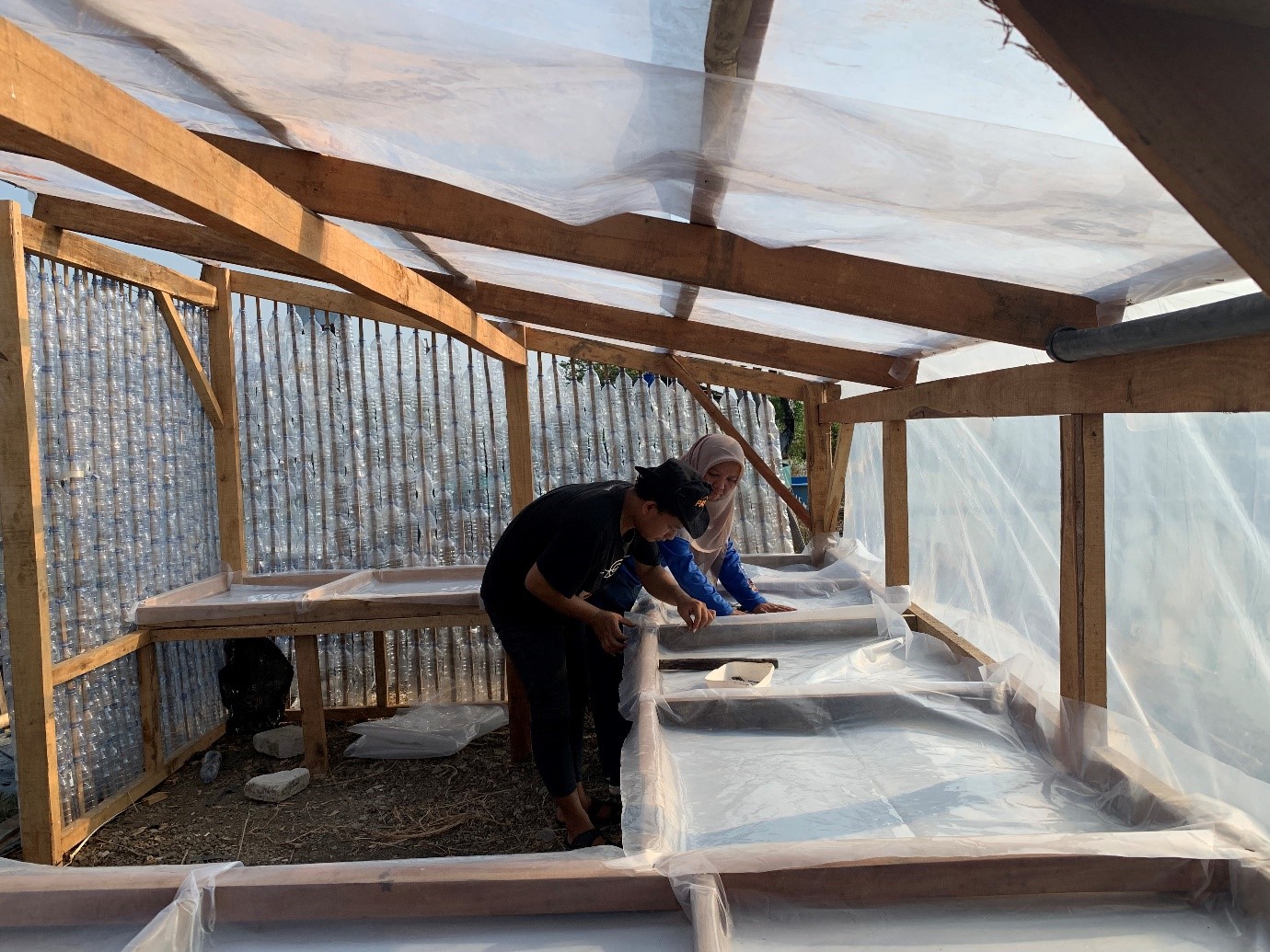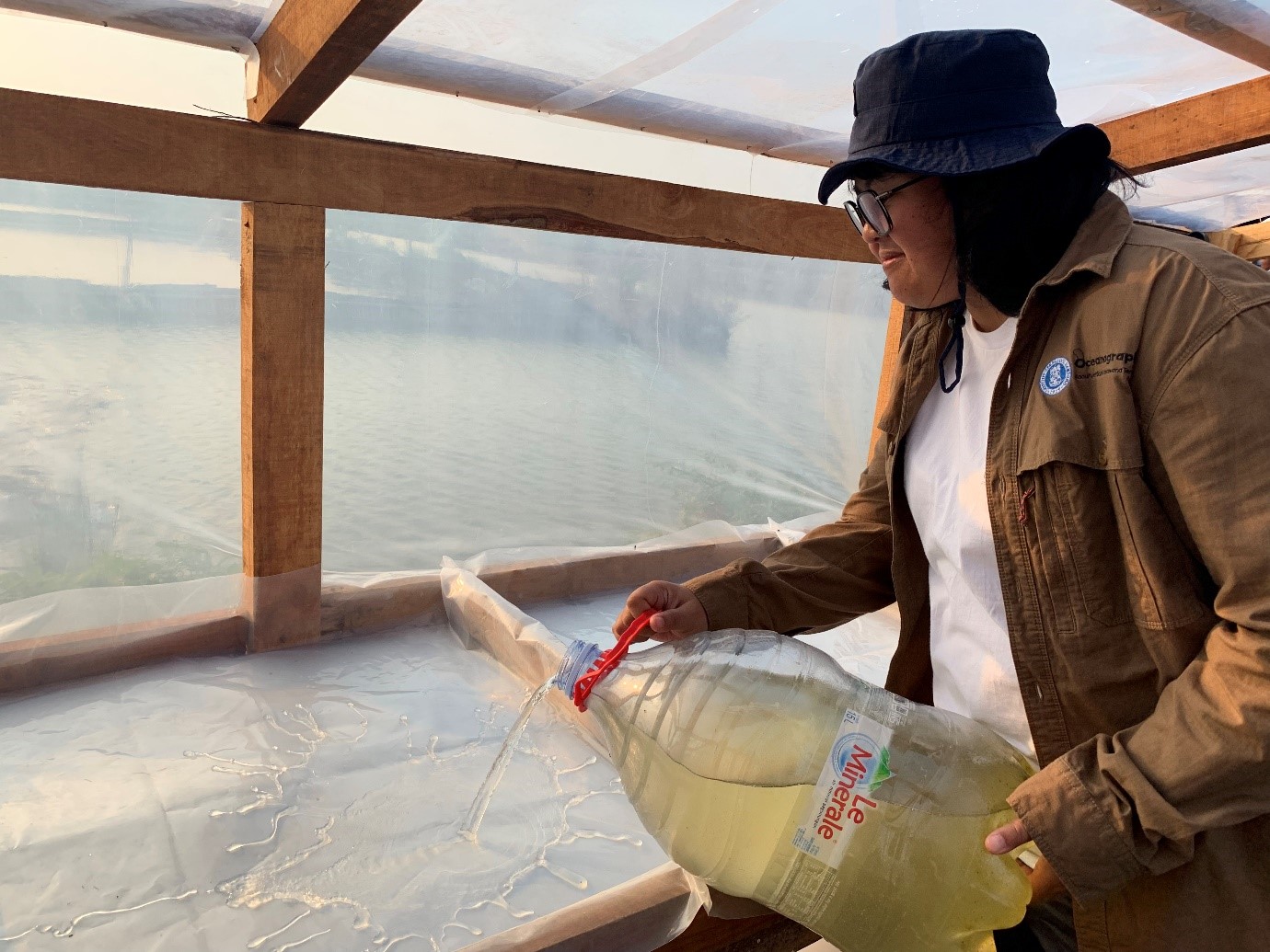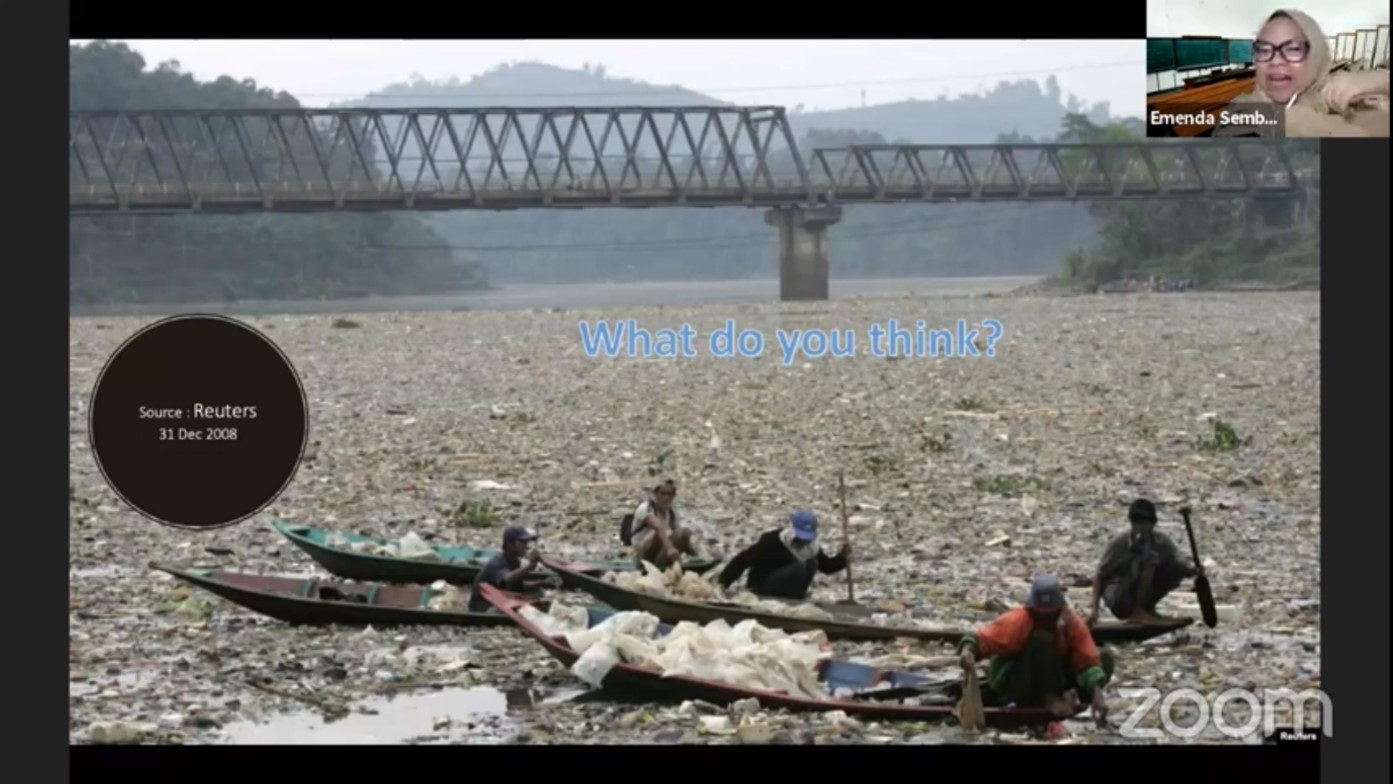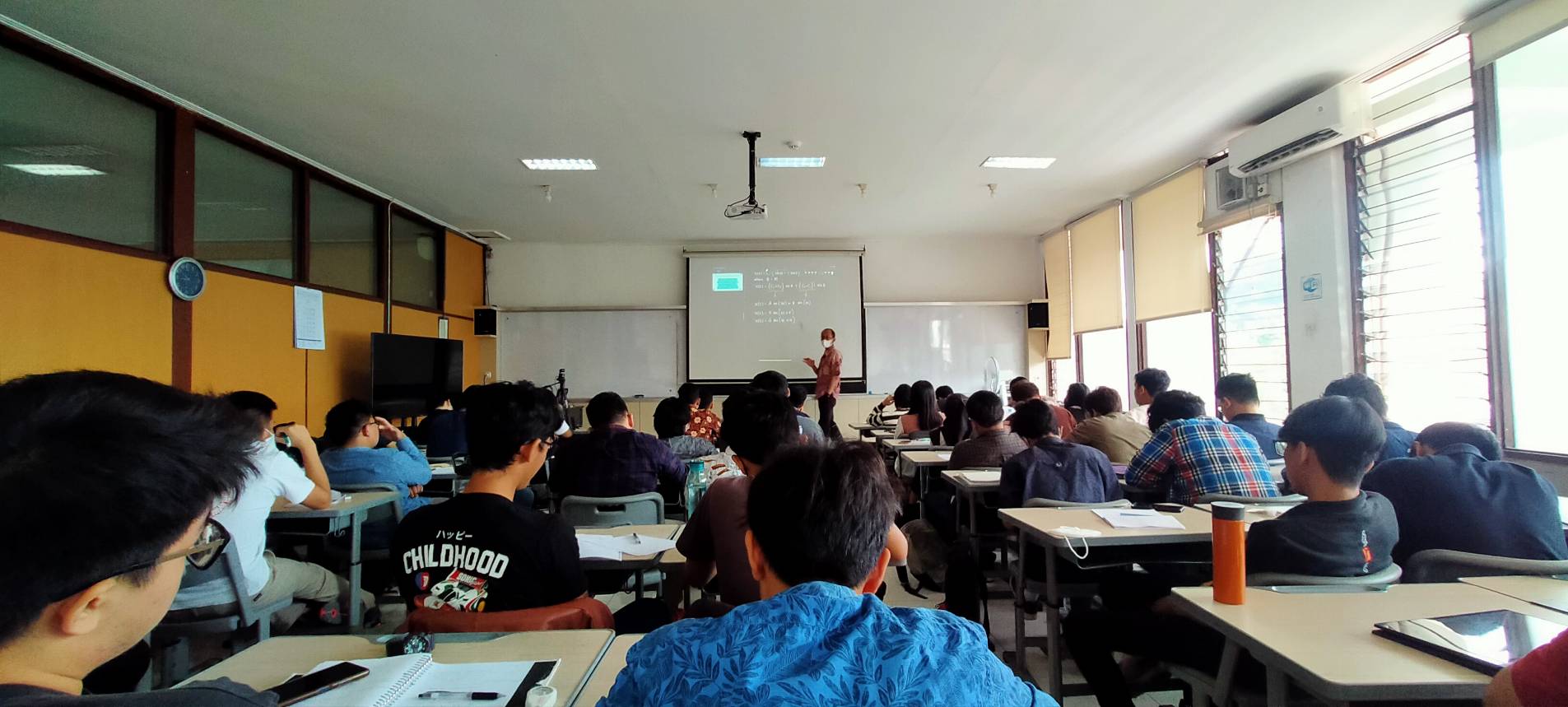Oceanography Lecturers of ITB Create A Salt House for Salt Production and Freshwater Purification
By Anggun Nindita
Editor Anggun Nindita

BANDUNG, itb.ac.id—Indonesia is a maritime nation and well known for its second-longest coastline in the world. However, the need for salt at the national level is still imported from other countries to be fulfilled. This problem led to a community service collaboration from the Faculty of Earth Sciences and Technology (FEST) ITB to create the salt house in Subang Regency, West Java.
Oceanography lecturer of ITB, Dr. Susanna Nurdjaman, S.Si., M.T., stated that Indonesia is still importing a high amount of salt, although it is known as a maritime nation.
“Salt farming needs a wide amount of sandy land. Therefore, we initiated the creation of the salt house that utilizes the energy from sunlight,” Dr. Susanna stated.
The 4 x 3 m salt house has walls of used transparent plastic bottles arranged with bamboo blades. The utilization of used plastic bottles can address trash problems. “It’s better to reuse the used bottles instead of throwing them away, because they can cause environmental degradation,” said Dr. Susanna, who is also the community service team leader.
The saltwater house works initially by pouring overnight precipitated seawater onto a storage table. The table is made from wood, coated with zinc and transparent plastic. The salt house will trap the heat and evaporate the seawater. Evaporated water vapor will be streamed to pipe through the slanted roof that is made from transparent mica. The water will become consumable freshwater, whereas the left salt on the table can be collected immediately.

“The salt house only depends on the sunlight indeed, but the use of each component has been considered to maximize the evaporation process. Such a desalination process has been endeavored in more simple form and applied for the Anak Laut tribe in the Archipelago of Riau,” Dr. Susanna added.
The community service program also involves other parties namely Oceanography lecturers, Geology Engineering lecturers, Earth Sciences students, and Ibu Pertiwi Foundation.
The building process and inauguration of the salt house finished on Saturday (07/29/2023), attended by the local government. After the 4 days of trial period, 1 kg of salt is produced from the seawater evaporation. The amount of time needed is relatively fast compared to the traditional salt making process by local people, which can take more than 2 weeks.
“The coastal area of Subang Regency is swamp beach type. Consequently, it cannot be used as salt ponds. However, this region has a great potential for sunlight. In addition, there are many vacant lots owned by the local community that can be used to build salt houses. The materials are cheap and easy to find,” she said.
She hopes this salt house can be utilized and imitated by the local people to make house-scale salt farming. “Hopefully, the transfer of knowledge we did can be an alternative for salt production and will increase the people’s prosperity.”
Reporter: Maharani Rachmawati Purnomo (Oseanografi, 2020)
Translator: Hanifa Juliana (Perencanaan Wilayah dan Kota, 2020)
Editor: Ayesha Lativa Mafaza (Teknologi Pascapanen 2021)

.jpg)

.jpg)
.jpg)
.jpg)

